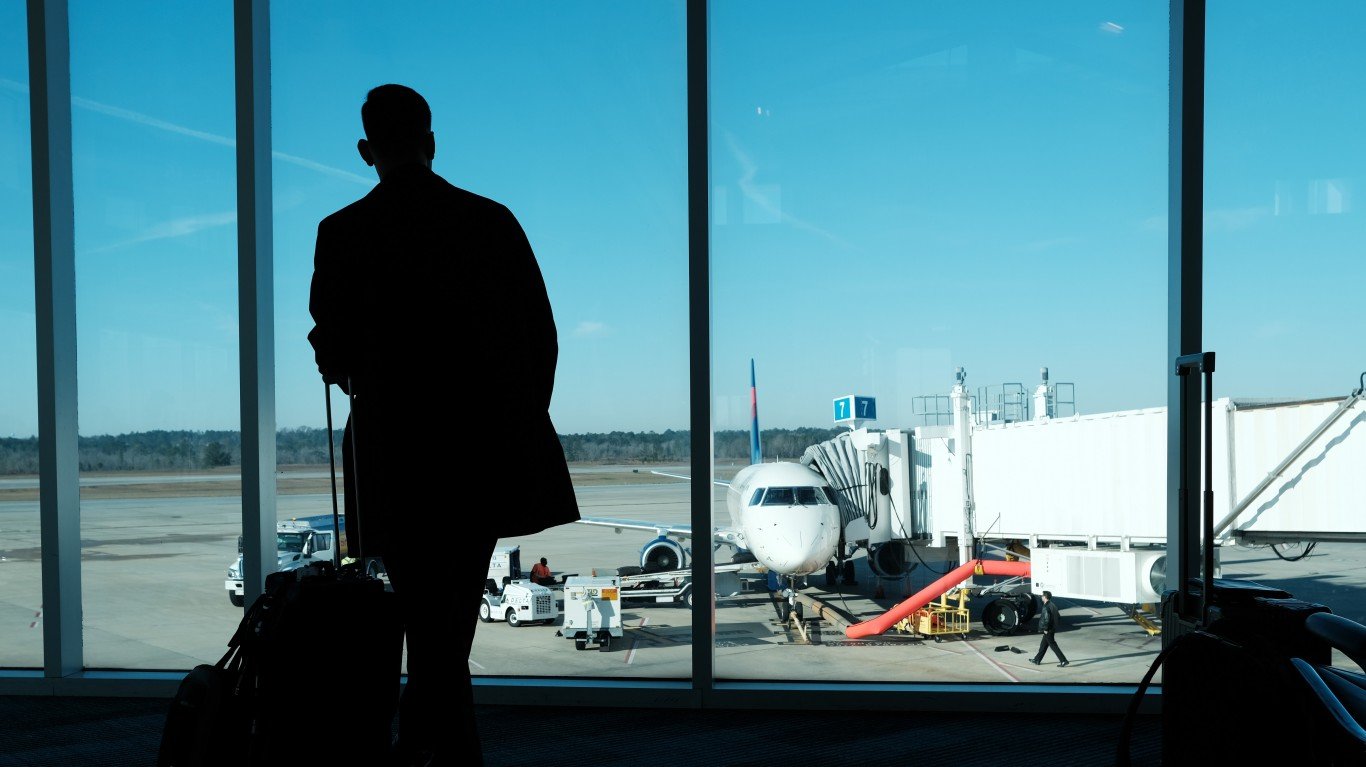

Investors have seen recoveries in airlines, hotels and other travel-related stocks over the past 75 days or so. The moves have been large enough that some investors may assume that the summer travel season and the continued recovery for the rest of 2020 would create a mini-boom as the economy reopens. The problem with these assumptions is that the spending and activity forecasts for 2020 are dire. To add insult to injury, the recovery in 2021 and beyond may still fall short of prior levels.
A new study from the U.S. Travel Association (USTA) is predicting that total travel spending will be down a sharp 45% in 2020. The group is calling for continued federal measures to support the travel industry through this recession. Its study outlines just how dire the situation is now, even with the stimulus and support that has been offered so far.
While investors may overlook some of this data, 24/7 Wall St. has seen direct weakness in many of the key travel-related stocks. The major indexes were down only a small amount on Wednesday. While a study could have an impact on shares, and could of course be called coincidental, an obvious issue today is the continued rise in COVID-19 cases as states continue to reopen for business.
The current forecast predicts that domestic travel spending will fall by 40% in 2020. That would put the $972 billion spent in 2019 at a new level of $583 billion this year. International inbound travel spending was forecast to drop even worse, with a 75% decline taking the $155 billion in 2019 down to only $39 billion this year.
As for the frequency, the total domestic trips taken by U.S. residents were forecast to drop 30% from 2019 to just 1.6 billion trips. The USTA pointed out that this was the lowest figure since the recession back in 1991.
The long and short of the matter is that this trade group is signaling that the travel and tourism industry is being damaged more severely than any other domestic sector as the COVID-19 fallout continues. The group also identifies why this needs to be a national priority. Travel-related industries employ one in 10 Americans and were listed as second to U.S. exports pre-pandemic.
Among some of the requests being signaled to lawmakers are extending the Paycheck Protection Program eligibility, tax incentives (including a temporary travel tax credit), restoring business expensing around entertainment, lawsuit protection and a federal backstop in pandemic risk insurance.
One interesting aspect of the study was that business travel was projected to be down 35.1% in the number of trips, with a prior forecast in its tables showing a drop to 300 million trips from 462 million trips.
As far as why all this plays into the travel stocks, outside of the obvious financial damage in 2020, is that the forecast data goes out and covers 2021 through 2023. The U.S. Travel Association’s current forecasts not only show 2021 being weaker than the prior three years in general. What stands out is that even as the numbers recover in the later years, 2022 and 2023 are still expected to be weaker than what had been seen in 2019 and the prior two years. The massive recovery in the travel-related stocks may have gotten a bit ahead of the real industry’s own internal forecasts.
United Airlines Holdings Inc. (NYSE: UAL) was down 3.5% at $38.75 on Wednesday, in a 52-week range of $17.80 to $96.03. The retreat in the shares was even after Seaport Global issued a Buy rating and a $56 price target, and it also may have been the company’s policy of mandatory use of facial masks in the plan. United also has some creative financing on top of government help. American Airlines Group Inc. (NASDAQ: AAL), which was considered the weakest of the legacy carriers pre-bailout money, was down 3.2% at $16.47, and its 52-week range is $8.25 to $34.99. Seaport Global also started coverage of American Airlines with a Buy rating, with a $27 price target.
Thank you for reading! Have some feedback for us?
Contact the 24/7 Wall St. editorial team.
 24/7 Wall St.
24/7 Wall St.


